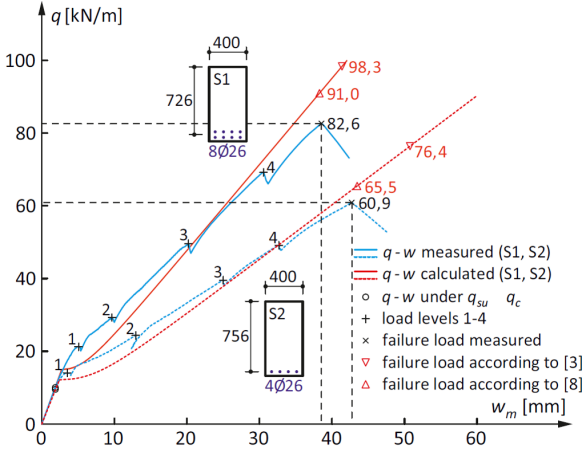Shear tests on uniformly loaded RC beams without stirrups
Author: Daniel Konradi
Language: English
Abstract
Despite hundreds of theoretical and experimental investigations carried out over the past decades, still no generally accepted, mechanically based model for the shear behaviour of structural concrete members without transverse reinforcement exists. The available theoretical models rely on limited experimental substantiation since the vast majority of the tests to date have been conducted on small, simply supported beams under point loads, which do not appropriately reflect real structures. Nevertheless, code provisions for shear design in structural concrete based on these theoretical models are used for the design of large structures under complex loading conditions. A comparison of experimental results with theoretical models concerning the shear strength of RC members without transverse reinforcement indeed reveals discrepancies between experimental and theoretical failure loads, and a lack of experimental data particularly for large specimens under distributed load. Therefore, two large-scale shear tests on simply supported, uniformly loaded beams without stirrups have been conducted to extend the experimental basis. This thesis presents a detailed description of the experimental setup, the tested specimens, the test procedure and the experimental results.
The experimental results are compared with various theoretical models and code provisions for shear in structural concrete. In addition, finite element analyses of the tested specimens were performed, using the commercial software ATENA. The failure loads evaluated with the theoretical models and the finite element analyses are in good accordance with the experimental results – they are within a range of 20 % – but at the same time not conservative. The shear strengths determined from code provisions showed a rather big scatter and partially exceeded the experimental failure loads as well.
 Load- deflection curves of the two experiments: theoretical curve with failure loads according to the Concrete Teeth Model by Prof. Peter Marti and the Critical Shear Crack Theory in red, experimental curve with measured failure load in turquoise.
Load- deflection curves of the two experiments: theoretical curve with failure loads according to the Concrete Teeth Model by Prof. Peter Marti and the Critical Shear Crack Theory in red, experimental curve with measured failure load in turquoise.
